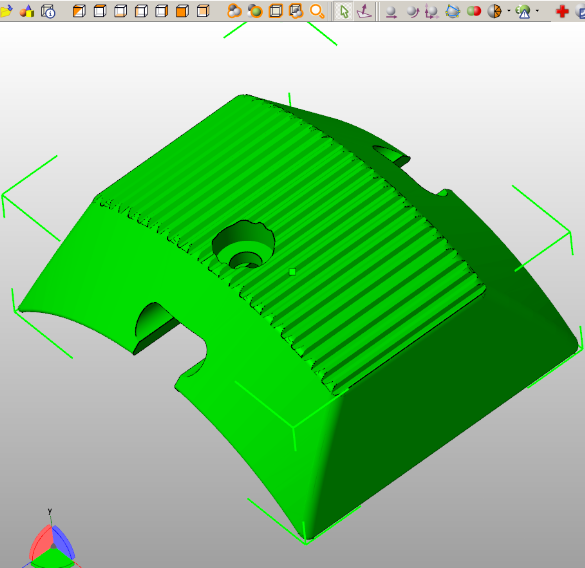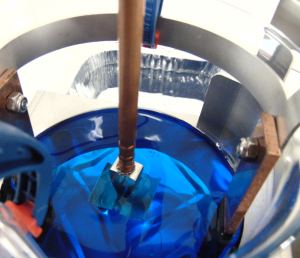 The Italian companies are always some of the most interesting when it comes to 3D printing. Hailing from a country steeped in a history of fine art, fine wines, and fine things, and known for producing multiple geniuses whose inventions we still hold dear today, innovative and creative companies have a lot to live up to. Companies like Robot Factory seem to meet expectations with ease, but just meeting the bar as it’s currently set isn’t what it’s all about–the goal is to offer something new that allows for even greater individuality and style in 3D printing.
The Italian companies are always some of the most interesting when it comes to 3D printing. Hailing from a country steeped in a history of fine art, fine wines, and fine things, and known for producing multiple geniuses whose inventions we still hold dear today, innovative and creative companies have a lot to live up to. Companies like Robot Factory seem to meet expectations with ease, but just meeting the bar as it’s currently set isn’t what it’s all about–the goal is to offer something new that allows for even greater individuality and style in 3D printing.
We reported on Robot Factory weeks ago as they were announcing their CopperFace machine, definitely an attractive concept for users as it allows them to coat their 3D prints with metal easily. Once 3D prints come down the line they are sprayed with graphite or silver, typically, and then placed in a bath which is responsible for the more simple plating process than traditional methods allow for. The CopperFace machine allows for objects to be coated in copper, nickel, silver, gold, and other precious and non-precious metals.
 But now, the team has taken on a very interesting case for galvanizing 3D printed products. Galvanized metal, used for a wide variety of containers and the ever famous galvanized bucket, is popular throughout the world in applications like making automobile components, construction materials and pipes, and far more. Traditionally achieved through the process of hot-dipping and electro-plating, the art of galvanization may be about to go through transformation if the latest project at Robot Factory catches on.
But now, the team has taken on a very interesting case for galvanizing 3D printed products. Galvanized metal, used for a wide variety of containers and the ever famous galvanized bucket, is popular throughout the world in applications like making automobile components, construction materials and pipes, and far more. Traditionally achieved through the process of hot-dipping and electro-plating, the art of galvanization may be about to go through transformation if the latest project at Robot Factory catches on.
Approached by a client who needed some smaller items galvanized for a work project, the team famous for the CopperFace machine saw a definite challenge at hand. They dove right in, examining the project scope in terms of size, current material base, grooves, purpose, and cathode dynamics.
The Robot Factory began by spraying the item, 28 x 11 x 23 mm in size, with silver. They chose this metal over graphite due to its lack of resistance, allowing for a homogeneous process that results in “constant and controlled thickness,” according to the team. Made of wax, the original form of the product had to be treated appropriately regarding its delicate nature.
“The object was very likely to break during the positioning of the cathode, and since the point of contact could not be visible after the metallization, we could not make use of the hole present in the object,” reported the team. “We also could not use the cathode with an external clamp due to fear of leaving marks on the surface….therefore, we decided to modify the clamp, reducing it in size so it could be easily positioned inside the groove without leaving marks on the surface.”
 Making sure that both the lower part and upper part of the product were ready, the team sprayed the part with three light layers of the silver-based spray. The clamp was attached and then they used a multimeter to make sure electrical continuity was just right. Moving from there, the Robot Factory team needed to assess the size of the surface area, which turned out to be 19.5 cm2. They discovered this by loading the .stl file into Netfabb and reading the dimensions there. Once assessed, they put the size value into an Excel sheet, included with the CopperFace software kit. Calculations were obtained for figuring out the right immersion times, with the goal being the best surface quality for the product to be galvanized.
Making sure that both the lower part and upper part of the product were ready, the team sprayed the part with three light layers of the silver-based spray. The clamp was attached and then they used a multimeter to make sure electrical continuity was just right. Moving from there, the Robot Factory team needed to assess the size of the surface area, which turned out to be 19.5 cm2. They discovered this by loading the .stl file into Netfabb and reading the dimensions there. Once assessed, they put the size value into an Excel sheet, included with the CopperFace software kit. Calculations were obtained for figuring out the right immersion times, with the goal being the best surface quality for the product to be galvanized.
They put the solution into an aluminum pan, inserted a magnetic stirrer, and filled it with water and ice to reach the desired, frigid conditions of 24°F.
“To facilitate the process, we used the magnetic stirrer so that in the galvanic bath, the heat was dissipated faster due to the movement,” said the team. “Once the bath reached a temperature of 24 degrees, it was possible to start the galvanic deposition by immersing the piece into the galvanic bath.”
 They stirred by hand repeatedly to make sure the surface was not affected by small bubbles. After approximately an hour, they removed the object from the bath and washed it under copious amounts of fresh water. They were able to achieve excellent results through this process, but the team does stress that it took careful consideration and analysis before beginning.
They stirred by hand repeatedly to make sure the surface was not affected by small bubbles. After approximately an hour, they removed the object from the bath and washed it under copious amounts of fresh water. They were able to achieve excellent results through this process, but the team does stress that it took careful consideration and analysis before beginning.
They do state that to get the best results when galvanizing with the CopperFace kit, you must be very aware of the process regarding size as when using standard anodes that are supplied with the kit. In that case, the maximum size would be 35 ÷ 40 cm², and with double anodes that the team can supply on request from the user, the maximum size is 75 ÷ 80 cm².
Are you interesting in using a metal or galvanized coating for your 3D printed items? How do you think devices like the CopperFace machine will change the ‘face’ of electroplating as we know it traditionally? Discuss in the CopperFace Kit Used to Galvanize Test Product forum thread over at 3DPB.com.
Subscribe to Our Email Newsletter
Stay up-to-date on all the latest news from the 3D printing industry and receive information and offers from third party vendors.
You May Also Like
3D Printing News Briefs, April 13, 2024: Robotics, Orthotics, & Hypersonics
In 3D Printing News Briefs today, we’re focusing first on robotics, as Carnegie Mellon University’s new Robotics Innovation Center will house several community outreach programs, and Ugogo3D is now working...
Rail Giant Alstom Saves $15M with 3D Printing Automation Software 3D Spark
3D Spark has entered into a three-year deal with the rail giant Alstom. Alstom, a transport behemoth with annual revenues of $16 billion, specializes in the manufacture of trains, trams,...
Meltio Expands Global Reach with New Partnerships in the Americas and Europe
Spanish 3D printing manufacturer Meltio has expanded its sales network across the globe. With the addition of three new partners in the United States, Brazil, Argentina, and Italy, Meltio aims...
3D Printing Webinar and Event Roundup: April 7, 2024
Webinars and events in the 3D printing industry are picking back up this week! Sea-Air-Space is coming to Maryland, and SAE International is sponsoring a 3D Systems webinar about 3D...
































